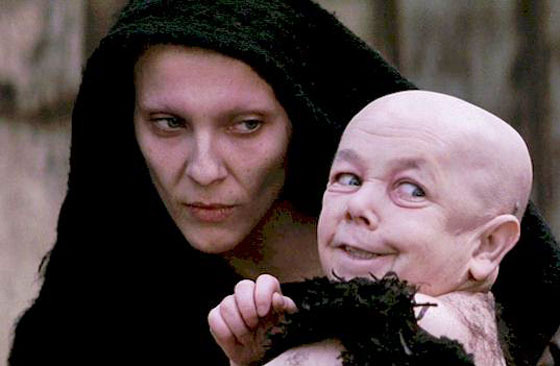On a bleak day in the year 33 of the Common Era, Jesus of Nazareth, a righteous man who had run afoul of both Jewish authorities and the Roman government, had been hastily sentenced to death, and had just trudged his way to Golgotha, the “Place of the Skull.” This man, Jesus, was then nailed to crossed beams of wood and forced to hang there until dead. As if this weren’t awful enough, accounts of the event suggest that while he hung on the cross, eerie events occurred: Blackness filled the sky, and other supernatural portents punctuated the event of his death. Matthew relates:
And Jesus cried out again with a loud voice and yielded up his spirit.
And behold, the curtain of the temple was torn in two, from top to bottom. And the earth shook, and the rocks were split. The tombs also were opened. And many bodies of the saints who had fallen asleep were raised, and coming out of the tombs after his resurrection they went into the holy city and appeared to many. When the centurion and those who were with him, keeping watch over Jesus, saw the earthquake and what took place, they were filled with awe and said, “Truly this was the Son of God!”
(Matthew 28: 50-54)
One of the most shocking of these aspects of the New Testament accounts of the death of Jesus is the spontaneous tearing of the massive “temple veil”. This is generally thought to have been the barrier that guarded the entrance to the “holy of holies”, the sacred space into which only the high priest could enter; However, this isn’t perfectly clear, and could also refer to an outer court veil that would be more visible. Naturally, secular historians don’t believe that this actually occurred, and even Christians, who accept it on faith, treat it as a minor footnote between the agonies of Jesus’ death and the glories of the Resurrection, which is a much more impressive miracle.
Intriguingly, extra-biblical sources do also attest to some weird goings on at the Jewish temple, in about the year 30. In an interesting article entitled, “Something Awry in the Temple?” Robert L. Plummer, a New Testament professor at Southern Baptist Theological Seminary, reviews six of these sources, which include the Jerusalem Talmud, Babylonian Talmud, the Midrash Rabbah, and the writings of Josephus.
The Jerusalem Talmud presents four disturbing and inauspicious signs:
It has been taught: Forty years before the destruction of the Temple the western light went out, the crimson thread remained crimson, and the lot for the Lord always came up in the left hand. They would close the gates of the Temple by night and get up in the morning and find them wide open. Said [to the Temple] Rabban Yohanan ben Zakkai, “O Temple, why do you frighten us? We know that you will end up destroyed. For it has been said, ‘Open your doors, O Lebanon, that the fire may devour your cedars!’” (Zech 11:1).17
In a work known as “the lives of the prophets”, dating to the first quarter of the first century, an oracle attributed to “Habakkuk” states:
At that time,” he said, “the curtain of the Dabeir [that is, the temple curtain separating the Holy from the Holy of Holies] will be torn into pieces, and the capitals of the two pillars will be taken away, and no one will know where they are; and they will be carried away by angels into the wilderness, where the tent of witness was set up in the beginning. And by means of them the Lord will be recognized at the end, for they will illuminate those who are being pursued by the serpent in darkness as from the beginning.”
Josephus’ account mentions the spontaneous opening of the eastern door, as well as other portents, including a comet, the shining of a mysterious bright light from the altar, and a heifer that had been brought in for slaughter mysteriously giving birth before it could be slain. An earthquake in the Temple grounds was also reported, as relayed by Plummer:
For purposes of confirming the NT records, it is significant that Josephus speaks of an earthquake that was felt in the temple precincts. According to Josephus, this earthquake was accompanied by a loud sound—like the sound of many voices—which some present interpreted as saying, “Let us depart from here” (not a particularly auspicious statement). Josephus dates this particular event to an unnamed Pentecost preceding the destruction of the temple.
It should be noted that these stories differ significantly from each other, and from the Gospels. Furthermore, the dating of these stories cannot be correlated precisely to what we would call “Good Friday.” But they do testify to a belief on the part of Jewish people, that some mysterious portents occurred in and around the Temple, around the year 30.
Sources:
1. Holy Bible, English Standard Version.
2. Plummer, Robert L, “Something Awry In the Temple? The Rending of the Temple Veil and Early Jewish Sources That Report Unusual Phenomena In The Temple Around AD 30.” Journal of the Evangelical Theologicsl Society 48 (June 2005): 301–316. Online at:
https://www.etsjets.org/files/JETS-PDFs/48/48-2/48-2-pp301-316_JETS.pdf
